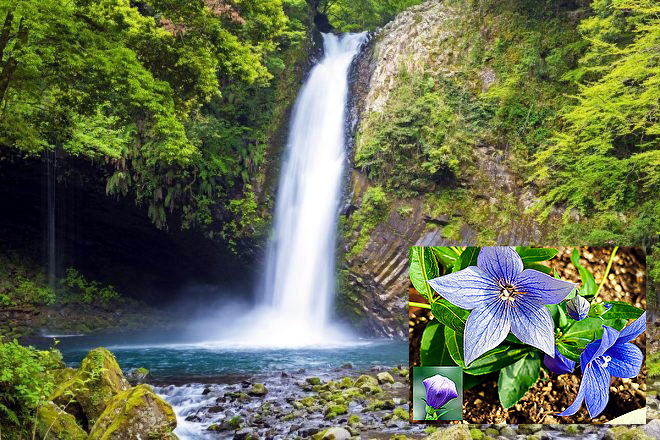
伊豆に住む友人から花の便りです。雷雨予報の出る中、朝散歩の道に咲いていた桔梗の花。
もうそんな時期になったんですね。俳句では、桔梗は秋の季語ですが、いつも梅雨時分から咲き出し、秋口まで咲いています。昔は長野県の高原や北アルプスや南アルプスの岩間にもよく見かけたのですが、最近はめっぽう少なくなりました。環境省のレッドデータブックでは、絶滅危惧II類(VU)に分類されているそうです。これは、絶滅の危険が増大している種であることを意味します。
伊豆、桔梗といえば、思い出すのは、昔伊豆の下田街道を辿った時、修善寺の川沿いでも、浄蓮の滝でも桔梗の花を見かけたことです。特に浄蓮の滝近くで見かけた桔梗は丸い袋状の蕾のものがあって、その可愛らしさといつ花開くのだろうかとしばらく見守り続けました。英語では桔梗のことをバルーンフラワーとも言うそうですが納得です。結局は花開くのは見届けられず、後ろ髪を引かれる思いで立ち去ったことを覚えています。
今日は初蝉の鳴き声も聞きました。いよいよ夏本番です。この年になっても心がワクワクします。
A friend who lives in Izu sent me a message about flowers. This is a photo of a bellflower blooming on the path of a morning walk while a thunderstorm was forecast.
It’s already that time of year. In haiku, bellflowers are a seasonal word for autumn, but they always start blooming during the rainy season and continue to bloom until the beginning of autumn. I used to see them often on the plateaus of Nagano Prefecture and among the rocks of the Northern and Southern Alps, but they have become much less common recently. In the Red Data Book of the Ministry of the Environment, they are classified as Vulnerable (VU). This means that they are a species that is at increasing risk of extinction.
Speaking of Izu and bellflowers, I remember seeing bellflowers along the river at Shuzenji and at Joren Falls when I toured Shimoda Kaido in Izu a long time ago. One of the bellflowers I saw near Joren Falls in particular had round, bag-shaped buds, and I watched them for a while, wondering how cute they were and when they would bloom. Apparently in English, bellflowers are also called balloon flowers, and I can see why. In the end, I wasn’t able to see them open flower, and I remember leaving with a heavy heart.
Today, I also heard the first cicadas. Summer is finally here. Even at my age, I feel excited.
